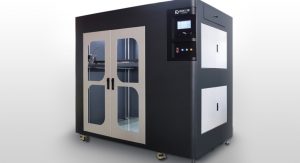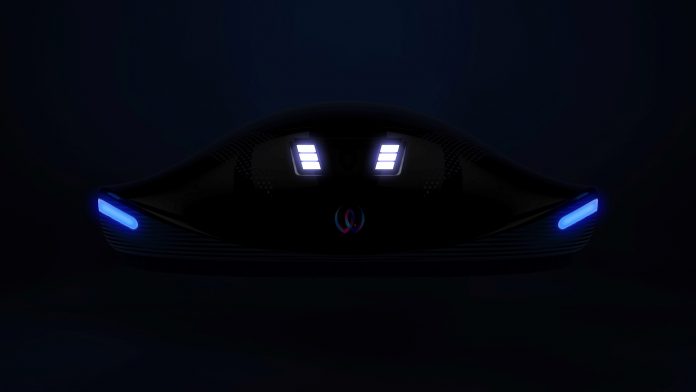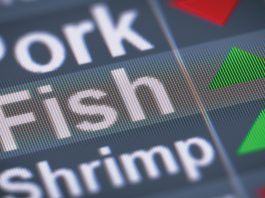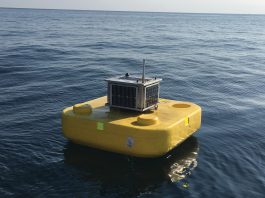Daily net cleaning, inspection, big data, and analysis will fundamentally change fish farming. The future is closer than many might think.
At Watbots, we love autonomous robots! Every day, we wake up thinking about how autonomous robots can change so many operations and issues and bring the fish farming industry to the next level. We have a fundamental ‘Level up’ technology that is very sustainable and will disrupt many areas in the coming years.
Watbots’ autonomous robots aims to solve two of the biggest environmental problems in the fish farming industry: algae growth and autonomous net inspection to prevent fish escaping.
Algae growth on nets is a known and on-going challenge for marine salmon aquaculture, impacting farming operations, fish health, and welfare. Current anti-fouling coatings and the reactive removal of biofouling are ineffective, costly, unsustainable, stress the fish, and hinder optimal fish growth. What exciting and valuable problems to solve, we thought back in 2019.
Can this problem be solved with autonomous robots? Nina Blöcher at Sintef Ocean, one of the foremost researchers in algae growth in fish pens, seems to think so in her report published in August 2020, entitled: Towards cost-effective biofouling management in salmon aquaculture: a strategic outlook. The ‘grooming of nets’ is a proposed strategy for the industry, with continuous cleaning that prevents biofouling development. It was as if Watbots had ordered this report, which was in complete alignment with our view. When we asked Blöcher to join our Steering Committee for developing our autonomous robots, she accepted with enthusiasm.
Why has this not been done before?
The main challenge stems from the fact that you have to rethink the robot’s energy use completely; it has to be ‘tetherless’, which means it has to be fully autonomous. We therefore eliminated joysticks, thrusters, and human interaction from the robots, which must be able to navigate based on sensor data only, all by themselves. That means utilising machine learning, 3D vision analysis, and Artificial Intelligence. That got our engineers and partners really excited! And while it is by no means easy, it is what we do and it is a worthy and exciting problem to solve!
Watbots’ business model is a pure rental model, with no upfront or installation costs, and one robot is dedicated to each fish pen. The robots will autonomously clean the net each day, and this roundtrip in the net opens up a new world of Big Data and Artificial Intelligence (AI) analysis.

The robots have a lot of sensors. Mapping about 8,000m2 on the largest 200m circumference farms at 0.01mm resolution will generate an enormous amount of valuable data. The robots will document the nets each day, measuring all trends and automatically identifying and reporting all breakages and holes using AI.
The direct benefits to the farmers are:
- Similar or lower cost of cleaning, but daily cleaning instead of every seven to 14 days;
- Less stress for the fish and no period of lost appetite due to washing (which equals more growth);
- Always optimal oxygen flow;
- Better welfare for the salmon and less risk of sickness;
- Eliminating copper-based anti-fouling coatings, reducing pollution;
- Complete daily control of the net, breakage, trends; and
- Fish escape will be significantly reduced via daily mapping, saving the environment and representing considerable value for the farmers.
We are confident that our sustainable robot technology will make a significant and positive change for the entire fish farming industry. Watbots have three competent and forward-leaning pilot customers who care deeply for sustainable fish farming, and we work with the expertise of Sintef Ocean and Letsea. The company is still in ‘secret mode’, and will not disclose too many details about the core technology just yet. However, there is a lot of international innovation involved. The locomotion system is patent-pending, and there will be further three-to-five patents filed soon.
The top engineering tools
To be a leading technology company, of course, also means that you need the top engineering tools, and we have four professional industrial 3D printers currently being used 24/7 in Sandnessjøen, Norway. A fifth is arriving soon and with the ability to print 1mX1mX1.2m or 1.2m3! We believe this to be the largest 3D printer in Norway, weighing 600kg!
The combination of Norwegian senior engineering competencies, young Master of Science engineers, and the most incredible tools enables us to rapidly and cost-effectively develop our robots and ensure fast and continuous improvements. The recruitment of very skilled and talented employees has proven easy with this setup.
Experience
Unlike most startups, Watbots’s team consists of six serial entrepreneurs with hands-on experience building, managing, and scaling industrial startups. Watbots has secured a solid financing platform of some €3.5m from professional investors with extensive robot and aquaculture experience. As such, we have now placed ourselves into leading position in terms of high-tech autonomous robots in the fish farming industry.
Autonomous robots are the future, and Watbots will be the driving force for fundamental change in the way nets for the fish farming industry are cleaned, resulting in societal benefits, better economics in the fish farms, and more sustainability for the industry! Finally, being able to solve the algae growth problem is great, but we believe that it is the data and analysis that will change the fish farming industry the most moving forwards. We go to work every day very excited about this – as we simply love autonomous robots!
Please note, this article will also appear in the sixth edition of our quarterly publication.










Slopehelper is a multipurpose autonomous vehicle with an electric motor. Connecting the universal platform to attachments automates work in vineyards and orchards. It is a great replacement for combines and orchard mowers. Agribot can also be considered a revolution in agriculture